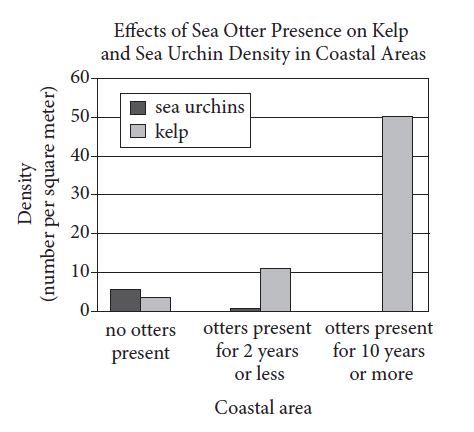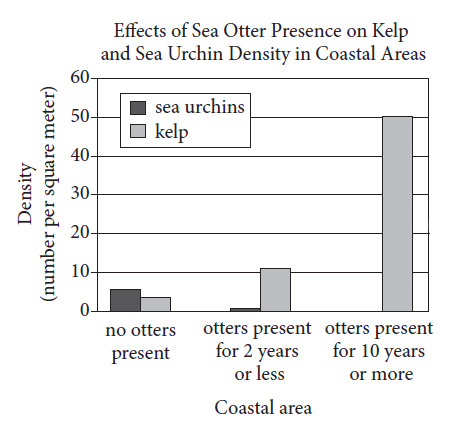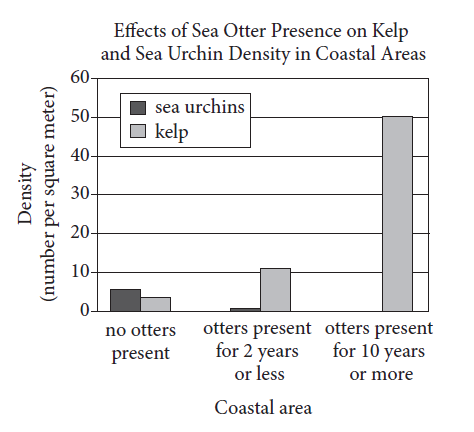A fabric store sells flannel and calico fabrics. Joan pays $25 for 3 yards of flannel and 4 yards of calico. Chris pays $11 for 1 yard of flannel and 2 yards of calico. What is the price of 1 yard of calico?
$3
$4
$5
$6
The correct Answer is:B
Step by step video, text & image solution for A fabric store sells flannel and calico fabrics. Joan pays $25 for 3 yards of flannel and 4 yards of calico. Chris pays $11 for 1 yard of flannel and 2 yards of calico. What is the price of 1 yard of calico? by Maths experts to help you in doubts & scoring excellent marks in Class 12 exams.
Topper's Solved these Questions
Similar Questions
A train standing in a station-yard blows a whistle of frequency 400 Hz in still air. A wind starts blowing in the direction from the yard to the station wit a speed of 10 ms−1?. What are the frequeney, wavelength and speed of sound foran observer standing on the station's platform ? Is the situation exactly equivalent to the case when the air is still and the observer runs towards the yard at the speed of 10 ms−1?
View SolutionExcess inventory, a massive problem for many businesses, has several causes, some of which are unavoidable. Overstocks may accumulate through production overruns or errors. Certain styles and colors prove unpopular. With some products computers and software, toys, and books last year's models are difficult to move even at huge discounts. Occasionally the competition introduces a better product. But in many cases the public's buying tastes simply change, leaving a manufacturer or distributor with thousands (or millions) of items that the fickle public no longer wants.
One common way to dispose of this merchandise is to sell it to a liquidator, who buys as cheaply as possible and then resells the merchandise through catalogs, discount stores, and other outlets. However, liquidators may pay less for the merchandise than it cost to make it. Another way to dispose of excess inventory is to dump it. The corporation takes a straight cost write-off on its taxes and hauls the merchandise to a landfill. Although it is hard to believe, there is a sort of convoluted logic to this approach. It is perfectly legal, requires little time or preparation on the company's part, and solves the problem quickly. The draw back is the remote possibility of getting caught by the news media. Dumping perfectly useful products can turn into a public relations nightmare. Children living in poverty are freezing and XYZ Company has just sent 500 new snowsuits to the local dump. Parents of young children are barely getting by and QPS Company dumps 1,000 cases of disposable diapers because they have slight imperfections. The managers of these companies are not deliberately wasteful, they are simply unaware of all their alternatives.
In 1976 the Internal Revenue Service provided a tangible incentive for businesses to contribute their products to charity. The new tax law allowed corporations to deduct the cost of the product donated plus half the difference between cost and fair market selling price, with the proviso that deductions cannot exceed twice cost. Thus, the federal government sanctions-indeed, encourages-an above-cost federal tax deduction for companies that donate inventory to charity.
What does the author say about the common ways to dispose of excess merchandise and inventory? Which of the following combination of sentences best summarizes the answer?View Solution
Knowledge Check
- Question 1 - Select One
What is the ratio of 2 feet to 4 yards?
A1:9B1:8C1:7D1:6 - Question 2 - Select One
A rectangle field is 3.2 yards long. A fence marking the boundary is 11.2 yards in length . What is the area of the field in square yards?
A4.68B7.68C9.28D11.28 - Question 3 - Select One
The art club designed and made banners of the school colors, blue and white, for their fund-raiser. Each banner required 14 yard of blue material and 38 yard of white material. The club originally planned to purchase exactly enough material to make 500 banners, but found the material to be cheaper if purchased i full bolts - the blue material in 10 yard bolts and the white material in 12-yard bolts. How many extra banners was the club able to make if they purchased enough full bolts to make at least 500 banners?
A12B13C15D16
Excess inventory, a massive problem for many businesses, has several causes, some of which are unavoidable. Overstocks may accumulate through production overruns or errors. Certain styles and colors prove unpopular. With some products computers and software, toys, and books last year's models are difficult to move even at huge discounts. Occasionally the competition introduces a better product. But in many cases the public's buying tastes simply change, leaving a manufacturer or distributor with thousands (or millions) of items that the fickle public no longer wants.
One common way to dispose of this merchandise is to sell it to a liquidator, who buys as cheaply as possible and then resells the merchandise through catalogs, discount stores, and other outlets. However, liquidators may pay less for the merchandise than it cost to make it. Another way to dispose of excess inventory is to dump it. The corporation takes a straight cost write-off on its taxes and hauls the merchandise to a landfill. Although it is hard to believe, there is a sort of convoluted logic to this approach. It is perfectly legal, requires little time or preparation on the company's part, and solves the problem quickly. The draw back is the remote possibility of getting caught by the news media. Dumping perfectly useful products can turn into a public relations nightmare. Children living in poverty are freezing and XYZ Company has just sent 500 new snowsuits to the local dump. Parents of young children are barely getting by and QPS Company dumps 1,000 cases of disposable diapers because they have slight imperfections. The managers of these companies are not deliberately wasteful, they are simply unaware of all their alternatives.
In 1976 the Internal Revenue Service provided a tangible incentive for businesses to contribute their products to charity. The new tax law allowed corporations to deduct the cost of the product donated plus half the difference between cost and fair market selling price, with the proviso that deductions cannot exceed twice cost. Thus, the federal government sanctions-indeed, encourages-an above-cost federal tax deduction for companies that donate inventory to charity.
In paragraph 3 by asserting that manufacturers "are simply unaware", the author suggests which of the following?View SolutionExcess inventory, a massive problem for many businesses, has several causes, some of which are unavoidable. Overstocks may accumulate through production overruns or errors. Certain styles and colors prove unpopular. With some products computers and software, toys, and books last year's models are difficult to move even at huge discounts. Occasionally the competition introduces a better product. But in many cases the public's buying tastes simply change, leaving a manufacturer or distributor with thousands (or millions) of items that the fickle public no longer wants.
One common way to dispose of this merchandise is to sell it to a liquidator, who buys as cheaply as possible and then resells the merchandise through catalogs, discount stores, and other outlets. However, liquidators may pay less for the merchandise than it cost to make it. Another way to dispose of excess inventory is to dump it. The corporation takes a straight cost write-off on its taxes and hauls the merchandise to a landfill. Although it is hard to believe, there is a sort of convoluted logic to this approach. It is perfectly legal, requires little time or preparation on the company's part, and solves the problem quickly. The draw back is the remote possibility of getting caught by the news media. Dumping perfectly useful products can turn into a public relations nightmare. Children living in poverty are freezing and XYZ Company has just sent 500 new snowsuits to the local dump. Parents of young children are barely getting by and QPS Company dumps 1,000 cases of disposable diapers because they have slight imperfections. The managers of these companies are not deliberately wasteful, they are simply unaware of all their alternatives.
In 1976 the Internal Revenue Service provided a tangible incentive for businesses to contribute their products to charity. The new tax law allowed corporations to deduct the cost of the product donated plus half the difference between cost and fair market selling price, with the proviso that deductions cannot exceed twice cost. Thus, the federal government sanctions-indeed, encourages-an above-cost federal tax deduction for companies that donate inventory to charity.
The author cites the examples in paragraph 3 most probably in order to illustrateView SolutionEnvironmentalist Otters
It has long been known that the sea otters (23) living along the West Coast of North America help––––––––––––––––––––––––––––––––––––––––––––––––––––––– keep kelp forests in their habitat healthy and vital. They do this by feeding on sea urchins and other herbivorous invertebrates that graze voraciously on kelp. With sea otters to keep the population of sea urchins in check, kelp forests can flourish. In fact, (24) two years or less of sea otters can completely eliminate sea urchins––––––––––––––––––––––––––––––––––––––––––––––––––––––––––––––––––––––– in a coastal area (see chart).

Adapted from David O. Duggins, “Kelp Beds and Sea Otters: An Experimental Approach.” ©1980 by the Ecological Society of America.
Without sea otters present, (25) nevertheless–––––––––––––, kelp forests run the danger of becoming barren stretches of coastal wasteland known as urchin barrens.
[1] What was less well-known, until recently at least, was how this relationship among sea otters, sea urchins, and kelp forests might help fight global warming. [2] The amount of carbon dioxide in the atmosphere has increased 40 percent (26) . [3] A recent study by two professors at the University of California, Santa Cruz, Chris Wilmers and James Estes, (27) suggests, that––––––––––––––– kelp forests protected by sea otters can absorb as much as twelve times the amount of carbon dioxide from the atmosphere as those where sea urchins are allowed to (28) devour–––––––– the kelp. [4] Like (29) their––––– terrestrial plant cousins, kelp removes carbon dioxide from the atmosphere, turning it into sugar fuel through photosynthesis, and releases oxygen back into the air.
[5] Scientists knew this but did not recognize (30) how large a role they played–––––––––––––––––––––––––––––– in helping kelp forests to significantly decrease the amount of carbon dioxide in the atmosphere. [6] Far from making no difference to the ecosystem, the presence of otters was found to increase the carbon storage of kelp forests by 4.4 to 8.7 megatons annually, offsetting the amount of carbon dioxide emitted by three million to six million passenger cars each year. (31)
Wilmers and Estes caution, however, that (32) having more otters––––––––––––––––––––– will not automatically solve the problem of higher levels of carbon dioxide in the air. But they suggest that the presence of otters provides a good model of how carbon can be sequestered, (33) or removed, from––––––––––––––––––– the atmosphere through the management of animal populations. If ecologists can better understand what kinds of impacts animals might have on the environment, Wilmers contends, “there might be opportunities for win-win conservation scenarios, whereby animal species are protected or enhanced, and carbon gets sequestered.”View SolutionEnvironmentalist Otters
It has long been known that the sea otters (23) living along the West Coast of North America help––––––––––––––––––––––––––––––––––––––––––––––––––––––– keep kelp forests in their habitat healthy and vital. They do this by feeding on sea urchins and other herbivorous invertebrates that graze voraciously on kelp. With sea otters to keep the population of sea urchins in check, kelp forests can flourish. In fact, (24) two years or less of sea otters can completely eliminate sea urchins––––––––––––––––––––––––––––––––––––––––––––––––––––––––––––––––––––––– in a coastal area (see chart).

Adapted from David O. Duggins, “Kelp Beds and Sea Otters: An Experimental Approach.” ©1980 by the Ecological Society of America.
Without sea otters present, (25) nevertheless–––––––––––––, kelp forests run the danger of becoming barren stretches of coastal wasteland known as urchin barrens.
[1] What was less well-known, until recently at least, was how this relationship among sea otters, sea urchins, and kelp forests might help fight global warming. [2] The amount of carbon dioxide in the atmosphere has increased 40 percent (26) . [3] A recent study by two professors at the University of California, Santa Cruz, Chris Wilmers and James Estes, (27) suggests, that––––––––––––––– kelp forests protected by sea otters can absorb as much as twelve times the amount of carbon dioxide from the atmosphere as those where sea urchins are allowed to (28) devour–––––––– the kelp. [4] Like (29) their––––– terrestrial plant cousins, kelp removes carbon dioxide from the atmosphere, turning it into sugar fuel through photosynthesis, and releases oxygen back into the air.
[5] Scientists knew this but did not recognize (30) how large a role they played–––––––––––––––––––––––––––––– in helping kelp forests to significantly decrease the amount of carbon dioxide in the atmosphere. [6] Far from making no difference to the ecosystem, the presence of otters was found to increase the carbon storage of kelp forests by 4.4 to 8.7 megatons annually, offsetting the amount of carbon dioxide emitted by three million to six million passenger cars each year. (31)
Wilmers and Estes caution, however, that (32) having more otters––––––––––––––––––––– will not automatically solve the problem of higher levels of carbon dioxide in the air. But they suggest that the presence of otters provides a good model of how carbon can be sequestered, (33) or removed, from––––––––––––––––––– the atmosphere through the management of animal populations. If ecologists can better understand what kinds of impacts animals might have on the environment, Wilmers contends, “there might be opportunities for win-win conservation scenarios, whereby animal species are protected or enhanced, and carbon gets sequestered.”View SolutionEnvironmentalist Otters
It has long been known that the sea otters (23) living along the West Coast of North America help––––––––––––––––––––––––––––––––––––––––––––––––––––––– keep kelp forests in their habitat healthy and vital. They do this by feeding on sea urchins and other herbivorous invertebrates that graze voraciously on kelp. With sea otters to keep the population of sea urchins in check, kelp forests can flourish. In fact, (24) two years or less of sea otters can completely eliminate sea urchins––––––––––––––––––––––––––––––––––––––––––––––––––––––––––––––––––––––– in a coastal area (see chart).

Adapted from David O. Duggins, “Kelp Beds and Sea Otters: An Experimental Approach.” ©1980 by the Ecological Society of America.
Without sea otters present, (25) nevertheless–––––––––––––, kelp forests run the danger of becoming barren stretches of coastal wasteland known as urchin barrens.
[1] What was less well-known, until recently at least, was how this relationship among sea otters, sea urchins, and kelp forests might help fight global warming. [2] The amount of carbon dioxide in the atmosphere has increased 40 percent (26) . [3] A recent study by two professors at the University of California, Santa Cruz, Chris Wilmers and James Estes, (27) suggests, that––––––––––––––– kelp forests protected by sea otters can absorb as much as twelve times the amount of carbon dioxide from the atmosphere as those where sea urchins are allowed to (28) devour–––––––– the kelp. [4] Like (29) their––––– terrestrial plant cousins, kelp removes carbon dioxide from the atmosphere, turning it into sugar fuel through photosynthesis, and releases oxygen back into the air.
[5] Scientists knew this but did not recognize (30) how large a role they played–––––––––––––––––––––––––––––– in helping kelp forests to significantly decrease the amount of carbon dioxide in the atmosphere. [6] Far from making no difference to the ecosystem, the presence of otters was found to increase the carbon storage of kelp forests by 4.4 to 8.7 megatons annually, offsetting the amount of carbon dioxide emitted by three million to six million passenger cars each year. (31)
Wilmers and Estes caution, however, that (32) having more otters––––––––––––––––––––– will not automatically solve the problem of higher levels of carbon dioxide in the air. But they suggest that the presence of otters provides a good model of how carbon can be sequestered, (33) or removed, from––––––––––––––––––– the atmosphere through the management of animal populations. If ecologists can better understand what kinds of impacts animals might have on the environment, Wilmers contends, “there might be opportunities for win-win conservation scenarios, whereby animal species are protected or enhanced, and carbon gets sequestered.”View Solution
